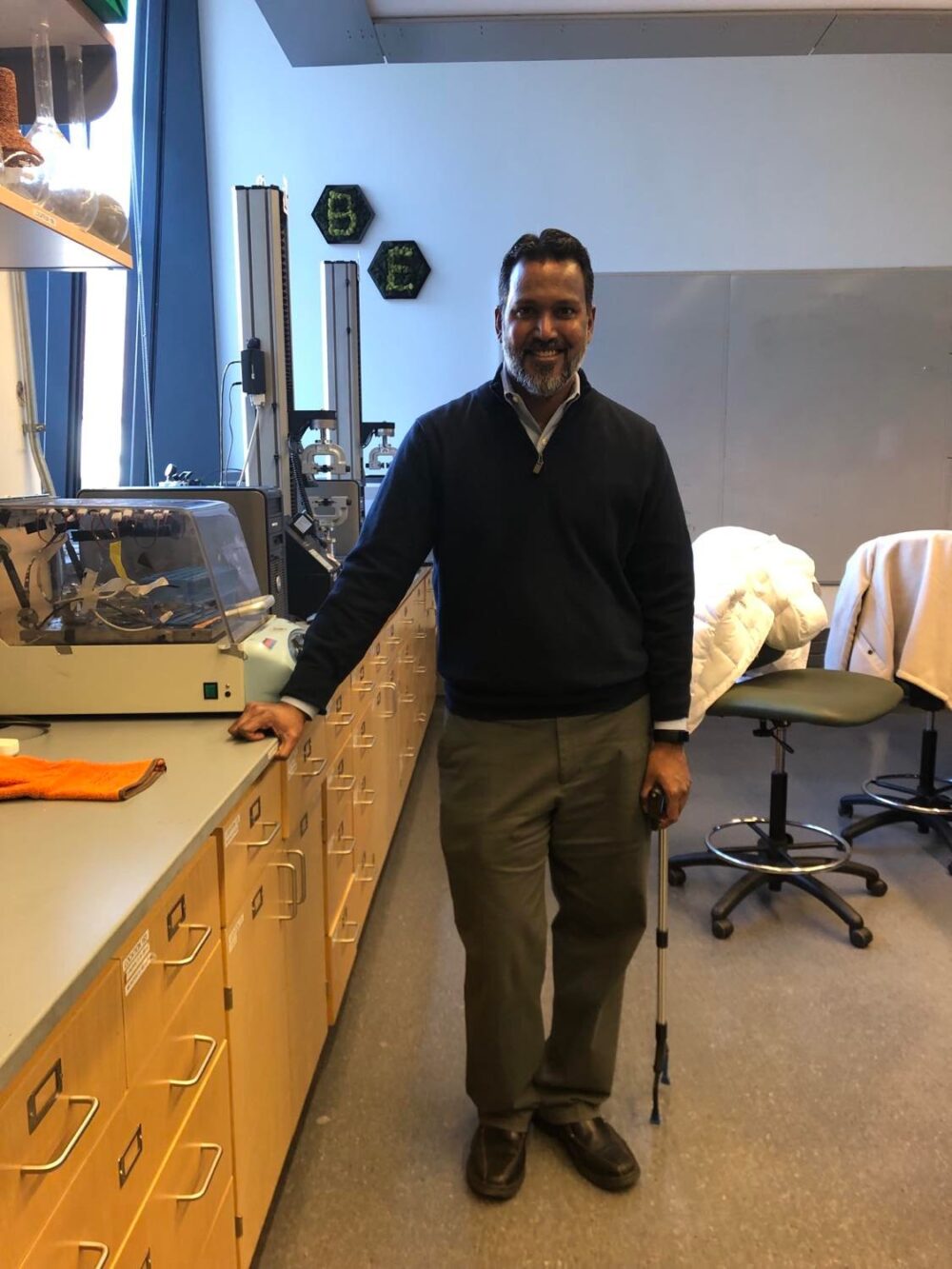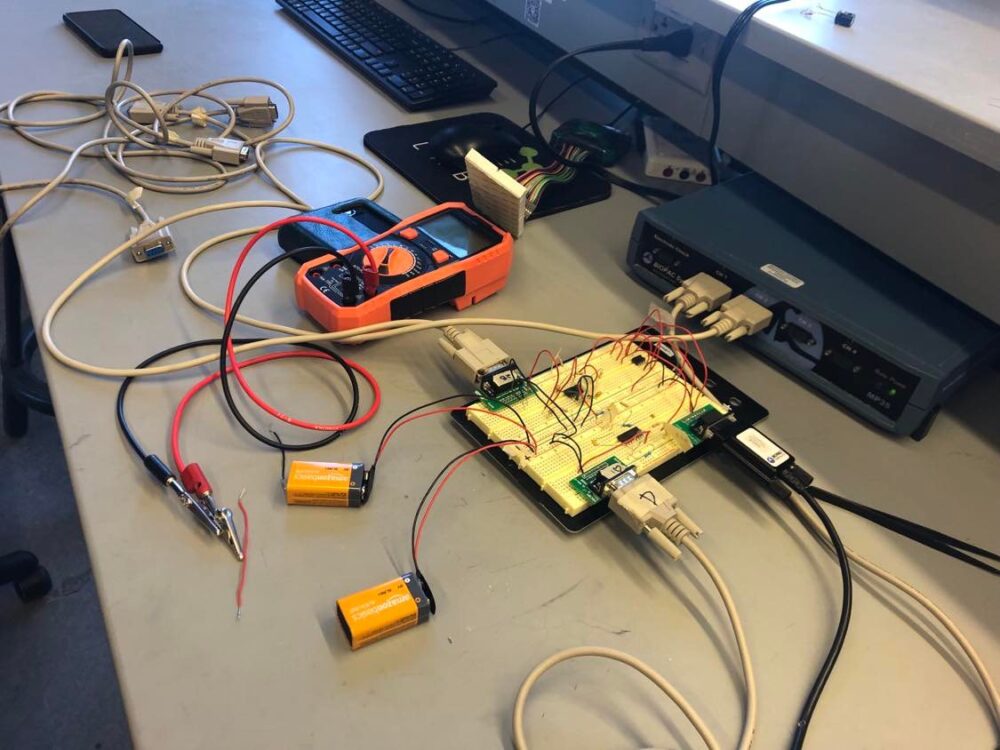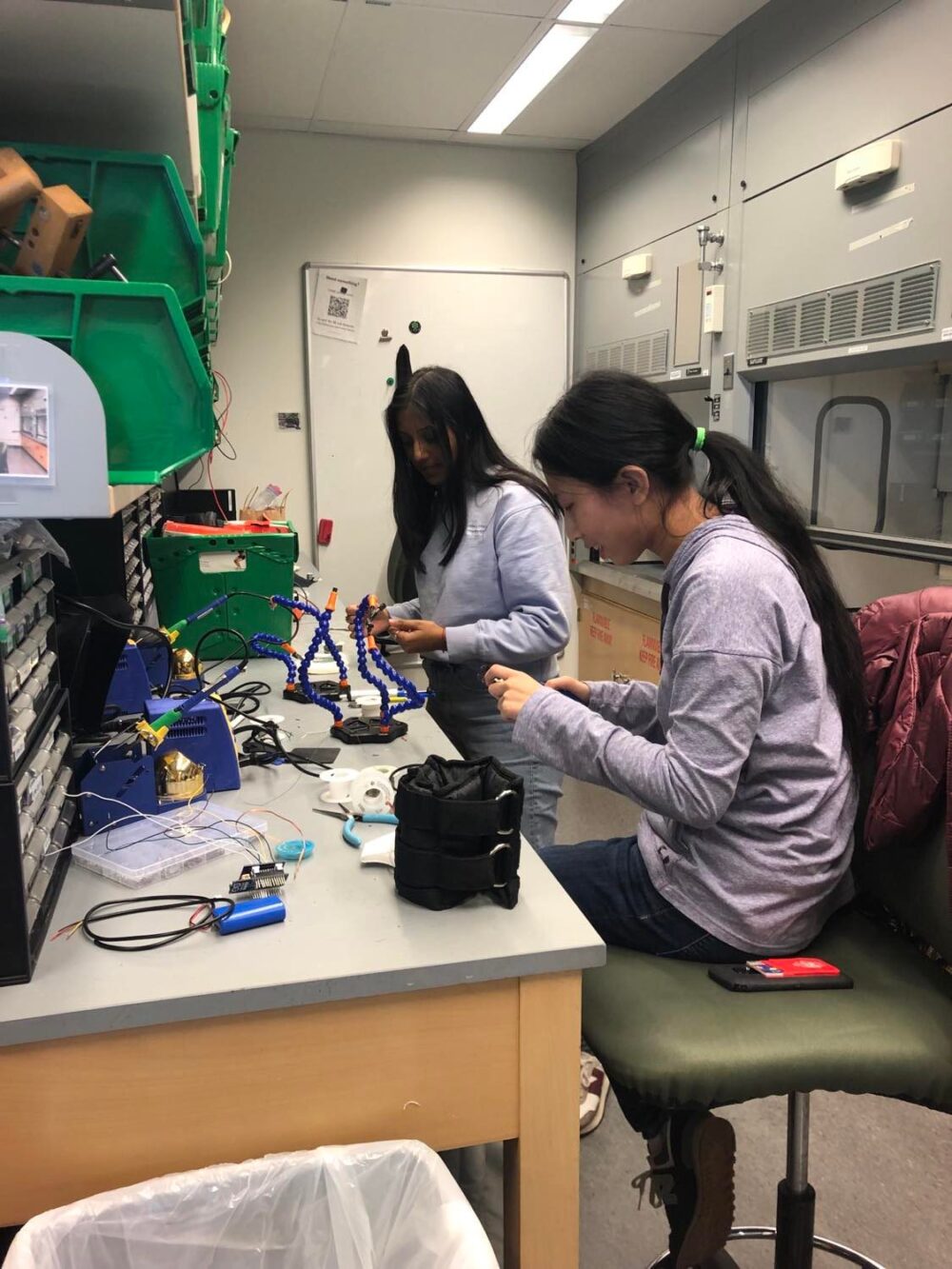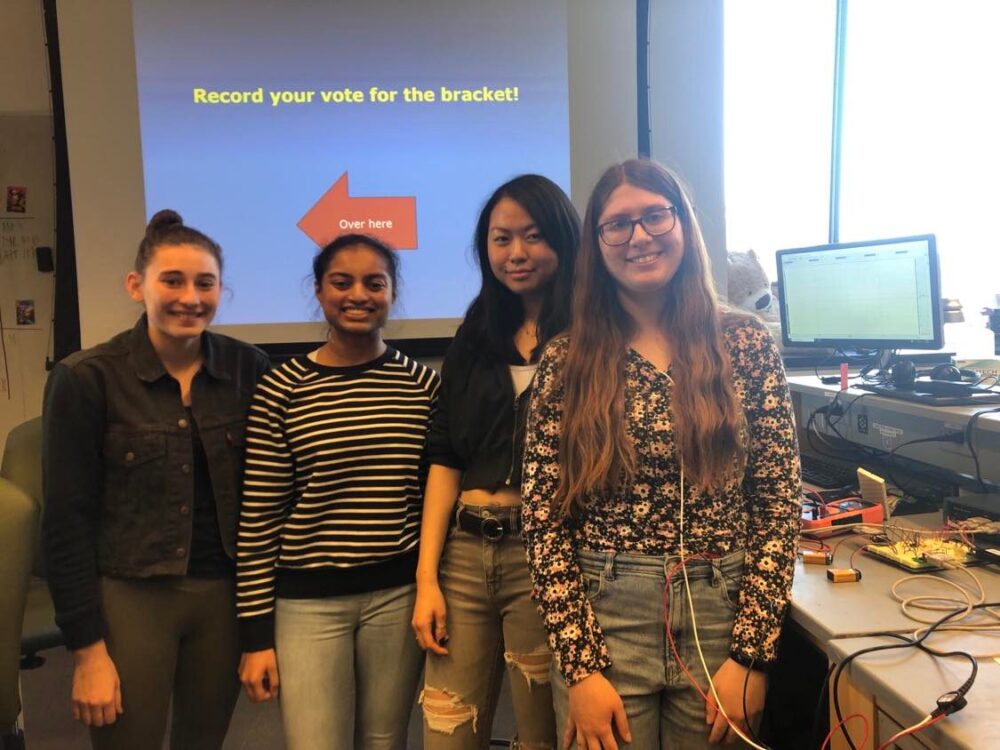After getting a little lost in the winding hallways of Skirkanich Hall on Penn’s University City campus last Thursday, this reporter eventually found her way up the second floor where the George H. Stephenson Foundation Educational Laboratory and Bio-MakerSpace. Once in the lab, music playing in the background was tuned out by the buzz of students working throughout the space.
The nearly 20-year-old lab is a space where anyone in the Penn community — that is, all PennCard ID holders — can work on collaborative projects, whether they are enrolled in the school’s bioengineering department and taking a class in the lab or not. Think of it more like a makerspace, with offerings that include hand tools, electronics, fume hoods, a cell culture hood, laser cutter and a sewing machine.
Lab director Sevile Mannickarottu said the space emphasizes “the interdisciplinary aspect of bioengineering,” as projects completed in this lab use tools from different types of engineering, as well as a sense of community.
“We have tools for mechanical, electrical, biological, chemical [engineering] here, and we’ll try to integrate it all together,” he said.

Sevile Mannickarottu. (Photo by Sarah Huffman)
During this reporter’s visit, half the room was working on an electrocardiography project as part of a course for bioengineering juniors to apply what they’ve learned in previous courses. The prompt: Build a device that can detect when astronauts are falling asleep while they work. The students measured their breathing and heart rates through a circuit with high and low pass filters to isolate each bodily signal. Heart rate has a higher frequency than breathing rate, so the filters make each rate show up as separate signals.
A student named Annika, who had three electrodes connected to different places on her body, explained that her group was able to see her heart and breathing signals change on the screen based on her physical activity. She’s worked with circuits and data processing before, she said, but this was the first time the class put the two together.
This reporter’s visit happened during the students’ design challenge day, when they demonstrated that their device could separate the heart rate and respiratory rate signals.

Junior electrocardiography projects. (Photo by Sarah Huffman)
Scattered throughout the rest of the space were senior bioengineering students working on their senior design projects. Those students previously took the junior level class to prepare them for what they’re doing now; bioengineering senior Jennifer Luo said the junior-level class was helpful in understanding how to go through a design process before doing it for their senior projects.
“The students all come here and they hang out and they build stuff,” said David Issadore, associate professor of bioengineering and electrical and systems engineering. “This junior-level course is kind of an entry point for their senior design. So next year, all these students are going to take on new projects, and then they all kind of hang around here and they build incredible stuff.”
Luo and Shivani Guha, another bioengineering senior, were working in the Bio-MakerSpace on their senior project: a wearable device to detect an infection in women who recently had a C-section. Luo and Guha said some students basically “live” at the lab working on projects.
“I think it’s a great place that brings in so many different aspects of engineering altogether,” Guha said. “Because bioengineering is so broad, we need the space to be able to work in a wet lab setting where we have the pipettes, we have the hoods and everything that we can use — but then also having the mechanical [tools] like laser cutting, and then also all the electrical [tools] and also the sewing machine, which is perfect for our wearable device. Having that all in one space is unbelievably convenient.”

Shivani Guha and Jennifer Luo working on their senior design project. (Photo by Sarah Huffman)

This editorial article is a part of Universities Month 2023 in Technical.ly’s editorial calendar.
Before you go...
Please consider supporting Technical.ly to keep our independent journalism strong. Unlike most business-focused media outlets, we don’t have a paywall. Instead, we count on your personal and organizational support.
Join our growing Slack community
Join 5,000 tech professionals and entrepreneurs in our community Slack today!

The person charged in the UnitedHealthcare CEO shooting had a ton of tech connections

From rejection to innovation: How I built a tool to beat AI hiring algorithms at their own game

Where are the country’s most vibrant tech and startup communities?


